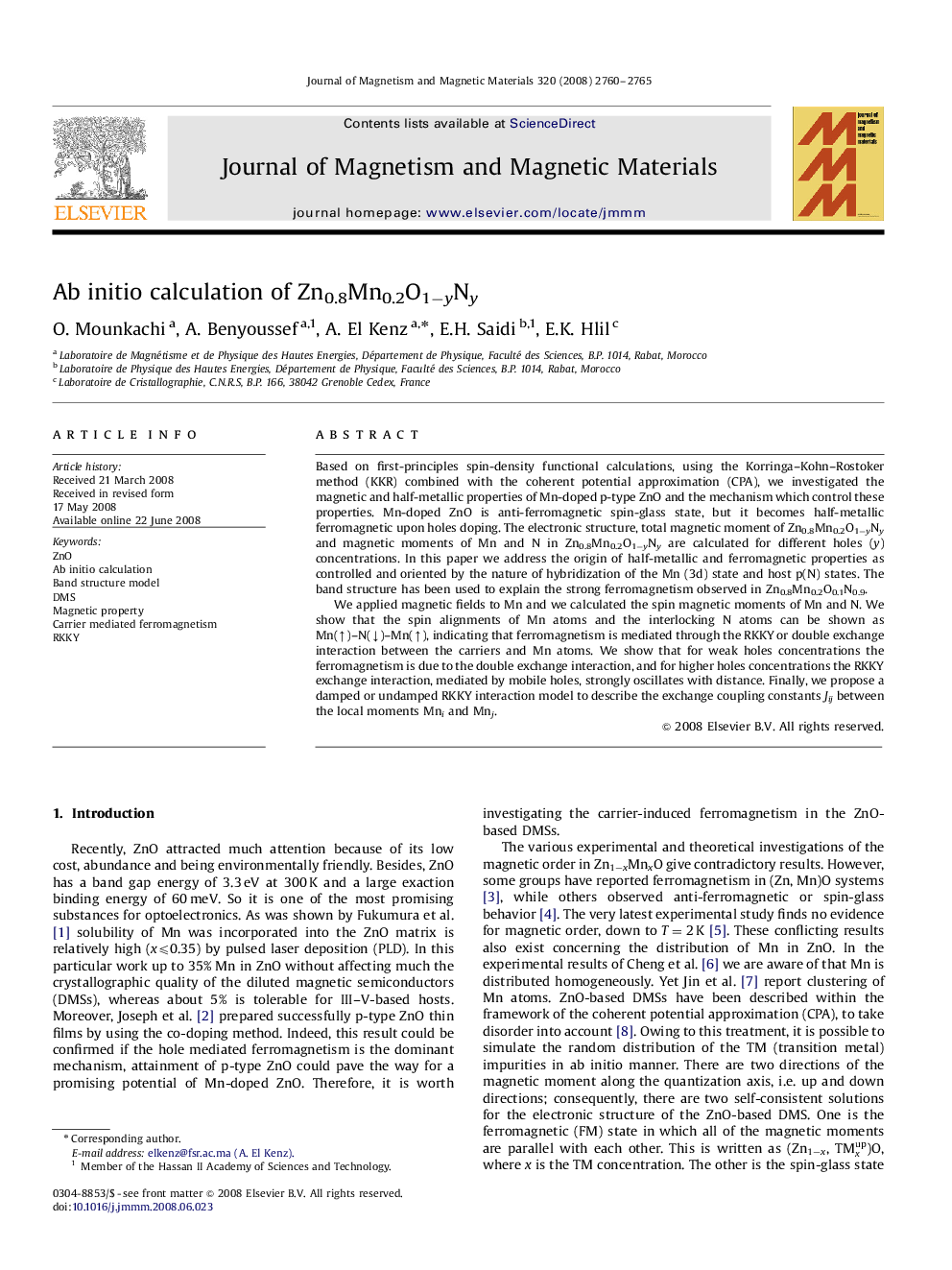| Article ID | Journal | Published Year | Pages | File Type |
|---|---|---|---|---|
| 1803866 | Journal of Magnetism and Magnetic Materials | 2008 | 6 Pages |
Based on first-principles spin-density functional calculations, using the Korringa–Kohn–Rostoker method (KKR) combined with the coherent potential approximation (CPA), we investigated the magnetic and half-metallic properties of Mn-doped p-type ZnO and the mechanism which control these properties. Mn-doped ZnO is anti-ferromagnetic spin-glass state, but it becomes half-metallic ferromagnetic upon holes doping. The electronic structure, total magnetic moment of Zn0.8Mn0.2O1−yNy and magnetic moments of Mn and N in Zn0.8Mn0.2O1−yNy are calculated for different holes (y) concentrations. In this paper we address the origin of half-metallic and ferromagnetic properties as controlled and oriented by the nature of hybridization of the Mn (3d) state and host p(N) states. The band structure has been used to explain the strong ferromagnetism observed in Zn0.8Mn0.2O0.1N0.9.We applied magnetic fields to Mn and we calculated the spin magnetic moments of Mn and N. We show that the spin alignments of Mn atoms and the interlocking N atoms can be shown as Mn(↑)–N(↓)–Mn(↑), indicating that ferromagnetism is mediated through the RKKY or double exchange interaction between the carriers and Mn atoms. We show that for weak holes concentrations the ferromagnetism is due to the double exchange interaction, and for higher holes concentrations the RKKY exchange interaction, mediated by mobile holes, strongly oscillates with distance. Finally, we propose a damped or undamped RKKY interaction model to describe the exchange coupling constants Jij between the local moments Mni and Mnj.
